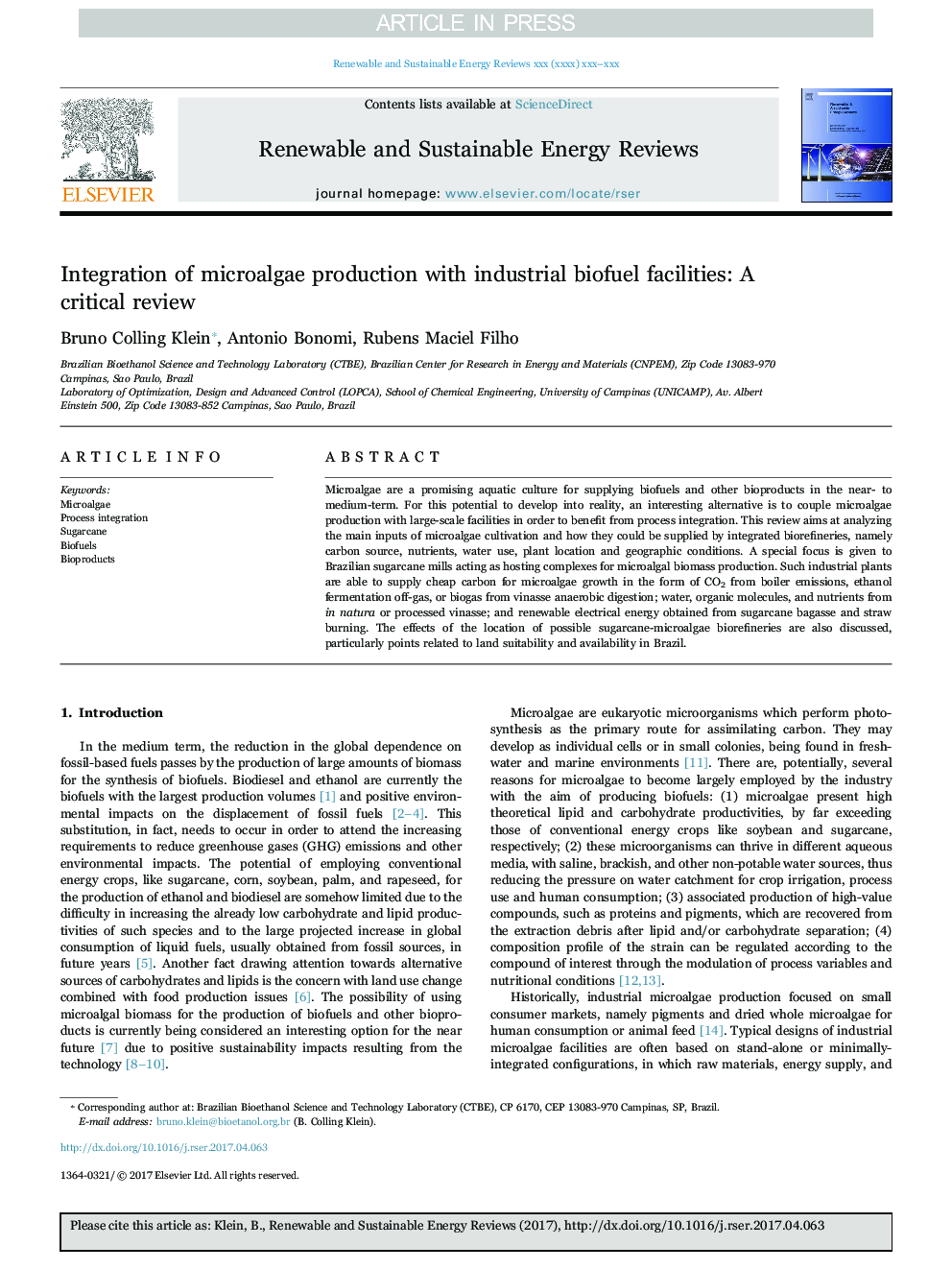| Article ID | Journal | Published Year | Pages | File Type |
|---|---|---|---|---|
| 8112482 | Renewable and Sustainable Energy Reviews | 2018 | 17 Pages |
Abstract
Microalgae are a promising aquatic culture for supplying biofuels and other bioproducts in the near- to medium-term. For this potential to develop into reality, an interesting alternative is to couple microalgae production with large-scale facilities in order to benefit from process integration. This review aims at analyzing the main inputs of microalgae cultivation and how they could be supplied by integrated biorefineries, namely carbon source, nutrients, water use, plant location and geographic conditions. A special focus is given to Brazilian sugarcane mills acting as hosting complexes for microalgal biomass production. Such industrial plants are able to supply cheap carbon for microalgae growth in the form of CO2 from boiler emissions, ethanol fermentation off-gas, or biogas from vinasse anaerobic digestion; water, organic molecules, and nutrients from in natura or processed vinasse; and renewable electrical energy obtained from sugarcane bagasse and straw burning. The effects of the location of possible sugarcane-microalgae biorefineries are also discussed, particularly points related to land suitability and availability in Brazil.
Related Topics
Physical Sciences and Engineering
Energy
Renewable Energy, Sustainability and the Environment
Authors
Bruno Colling Klein, Antonio Bonomi, Rubens Maciel Filho,
